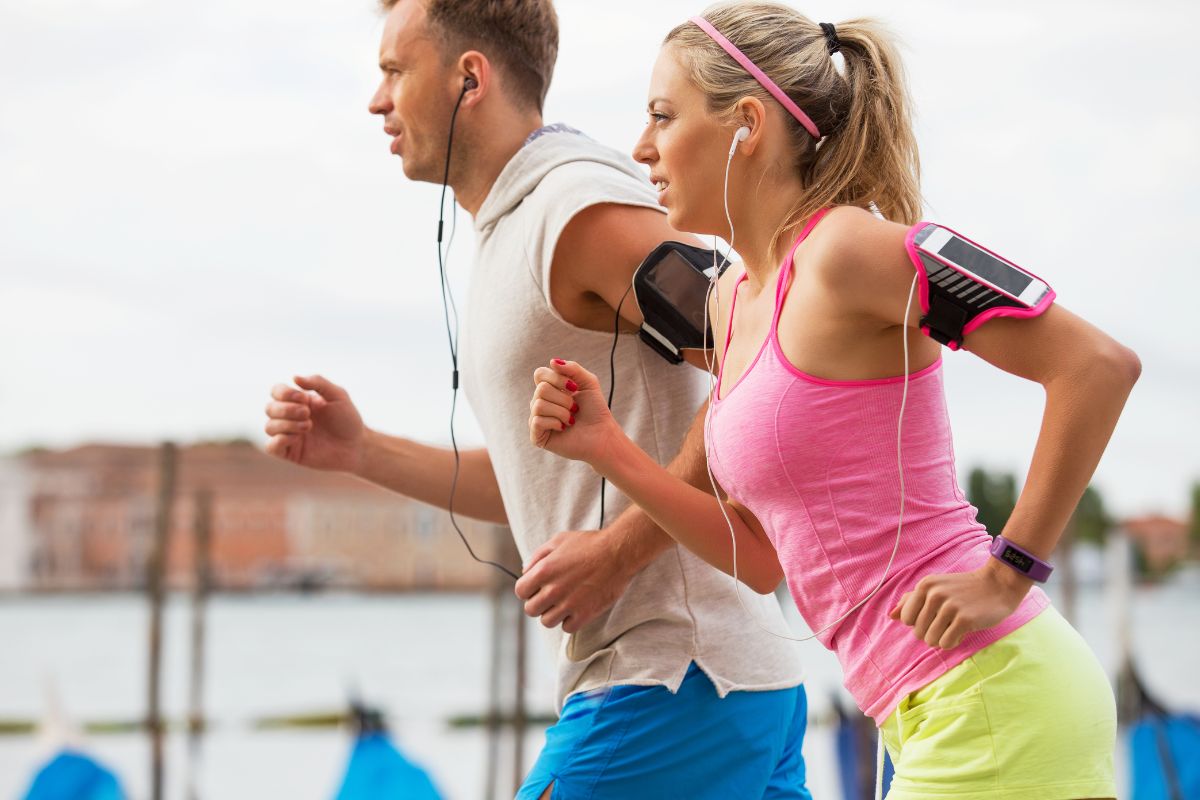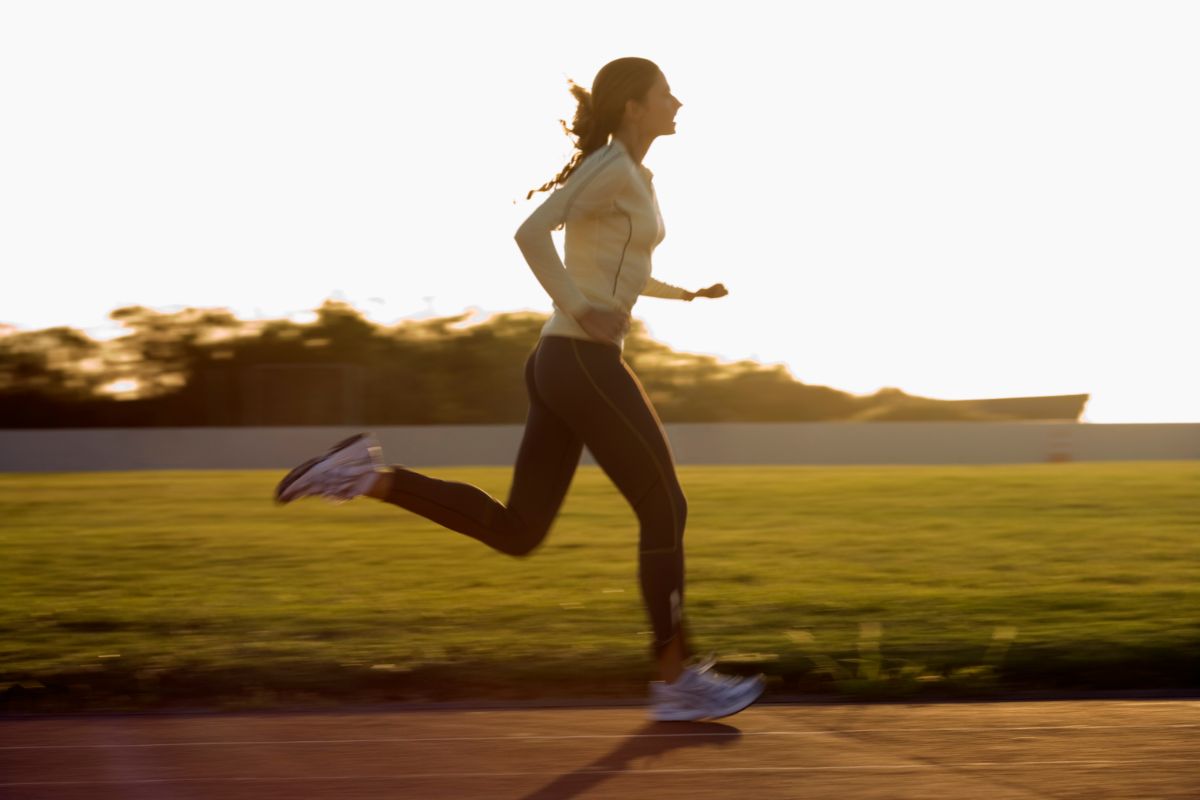Generally speaking, all we need to go running are a reliable pair of trainers, a running top, socks, a drink, and running shorts.
However, what do we do when the weather changes? This is when it’s time to start looking at other things we may or may not have to wear when running.

In fact, wearing the correct things when running can be detrimental to performance. If you’re too hot, you’ll struggle to keep going, while if you’re too cold, you might never get going.
Knowing what to wear when running will keep you cool on the hottest days and warm on the coldest days, helping eliminate any potential discomfort.
You won’t have to skip a run due to the cold, and you can compete to the best of your ability.
If you want to be prepared for any type of weather for your next run, you’ve come to the best place.
In this post, we’ll show you everything you need to wear in regard to running in different temperatures.
Let’s get started!
90°F
First up, we have running at 90°F.
Before we say anything about what you should wear, we’d first like to mention that this temperature is extremely hot to be running in, therefore above all else, you should make sure you take plenty of water on your run with you.
As this temperature is incredibly hot, wearing light running clothes that offer excellent ventilation is key.
Clothes that are also lightly colored are a strong choice. We also recommend wearing singlets and shorts.
Some men may even prefer to run topless, while some women might choose to run in a sports bra. Moisture socks will keep your feet dry and quick-drying materials will help wick away intense sweat.
Sunglasses, a hat, and sunscreen are also highly recommended.
70-90°F
Despite being potentially 20°F lower than the temperature we have already mentioned, if humidity is high and the weather is muggy, most runners will still find 70-90°F very hot.
As a result, the best running gear to wear isn’t too dissimilar to running at 90°F.
Again, wearing running gear that wicks sweat away and is light in color is a good choice. Lightly-colored shorts, singlets, and shirts will all work well in these conditions.
You should wear reflective, light-colored clothes as they will help reflect the sunlight, keeping you much cooler in the process.
If you know the weather is going to be between 70-90°F and muggy the night before your run, we recommend heading out early or late to miss the intense heat.
60-70°F
As temperatures begin to drop, runners typically start to run further and further.
While the temperatures have now dropped enough to make running a lot more comfortable, you might still decide to wear light shorts and shirts.
However, some runners will also now prefer to start wearing a thin pullover.
Dressing in layers might not be your favorite thing to do, but you can always take a layer off and tie it around your waist if necessary.
The last thing you want is to start feeling cold a couple of miles away from home with no pullover.
As you start to up your miles, there’s more need for effective recovery so be sure to stay hydrated and properly stretch.
50-60°F
As far as perfect running temperatures go, most runners would probably agree that 50-60°F is absolutely perfect. We tend to agree.
Running in these temperatures gives you the chance to wear your favorite running shirts and your comfortable running shorts.
Again, don’t forget to take a pullover with you in case you get cold.
As the temperatures continue to drop, you’ll also find a much bigger need for a cozy hat that will keep your head nice and toasty.
This is particularly important for those that run late in the evenings or early in the morning.
If you plan on running when it’s darker outside, don’t forget to wear reflective clothing so you’re visible to traffic.
40-50°F
40-50°F temperatures can also be extremely comfortable and pleasant to run in. In fact, you’ll probably find yourself running more regularly and further.
However, wearing the correct running gear now becomes even more important as things are starting to get chilly outside.

With that in mind, we strongly recommend wearing a shirt, a long-sleeved pullover, comfortable shorts, and moisture-absorbent socks.
These items will set you up for an amazing running experience.
When temperatures fall below 45°F, changing your shorts for leggings could be a good idea.
You might also want to wear a beanie or hat to keep your head extra warm. We often find gloves a necessary addition too.
It is worth noting that when temperatures drop to 40°F, there’s a much bigger need for effective warming up before each run.
30-40°F
It’s at temperatures of 30-40°F that you’ll start to feel a lot colder.
When this starts to happen, it is crucial that you start to wrap up warm. You can do this easily by layering up high-quality pieces of running clothing.
This will include at least two layers on your top half, a pair of running tights, and waterproof/windproof gloves.
If you don’t like the cold, layering up with a third layer on your top half is another great idea. A beanie hat or headband will also help keep your head warm.
When it comes to your socks, a pair of moisture-absorbent socks are still very much necessary.
20-30°F
The final temperatures on our list are 20-30°F. Anything below that and you start to seriously put yourself at risk.
When temperatures start to fall below 30°F, you need to dig out your lightweight running jacket.
You should then wear your running jacket over the top of a base layer and at least two long-sleeved running tops.
Even then, you probably won’t feel warm.
There’s no way you’ll be able to wear your shorts in this weather so switch them out for a thick pair of running pants.
Alternatively, you could wear thermal leggings and wear track pants and shorts over the top.
Make sure you also wear your moisture-absorbent socks, mittens or gloves, and a hat.
Final Thoughts
Wearing the right outfit when running in various temperatures is essential.
Not only does the right outfit ensure your safety, but it also helps you perform to the best of your ability.
Whether you live somewhere incredibly hot, super cold, or somewhere where the weather changes between cold and hot all the time, you can easily make small changes to your outfit that make your running experience much more enjoyable.
In this post, we’ve given you the rundown on what to wear at each temperature.
All you need to do now is make sure you’re prepared for any eventuality. Don’t miss out on valuable training time because you’re too hot or too cold.
- Can Dogs Run Faster Than Humans? (Running With Your Furry Friend) - October 4, 2022
- 10 Doggie Fun Runs You Will Love [Ultimate Guide] - October 4, 2022
- What Are Division Results In Running? - October 4, 2022








